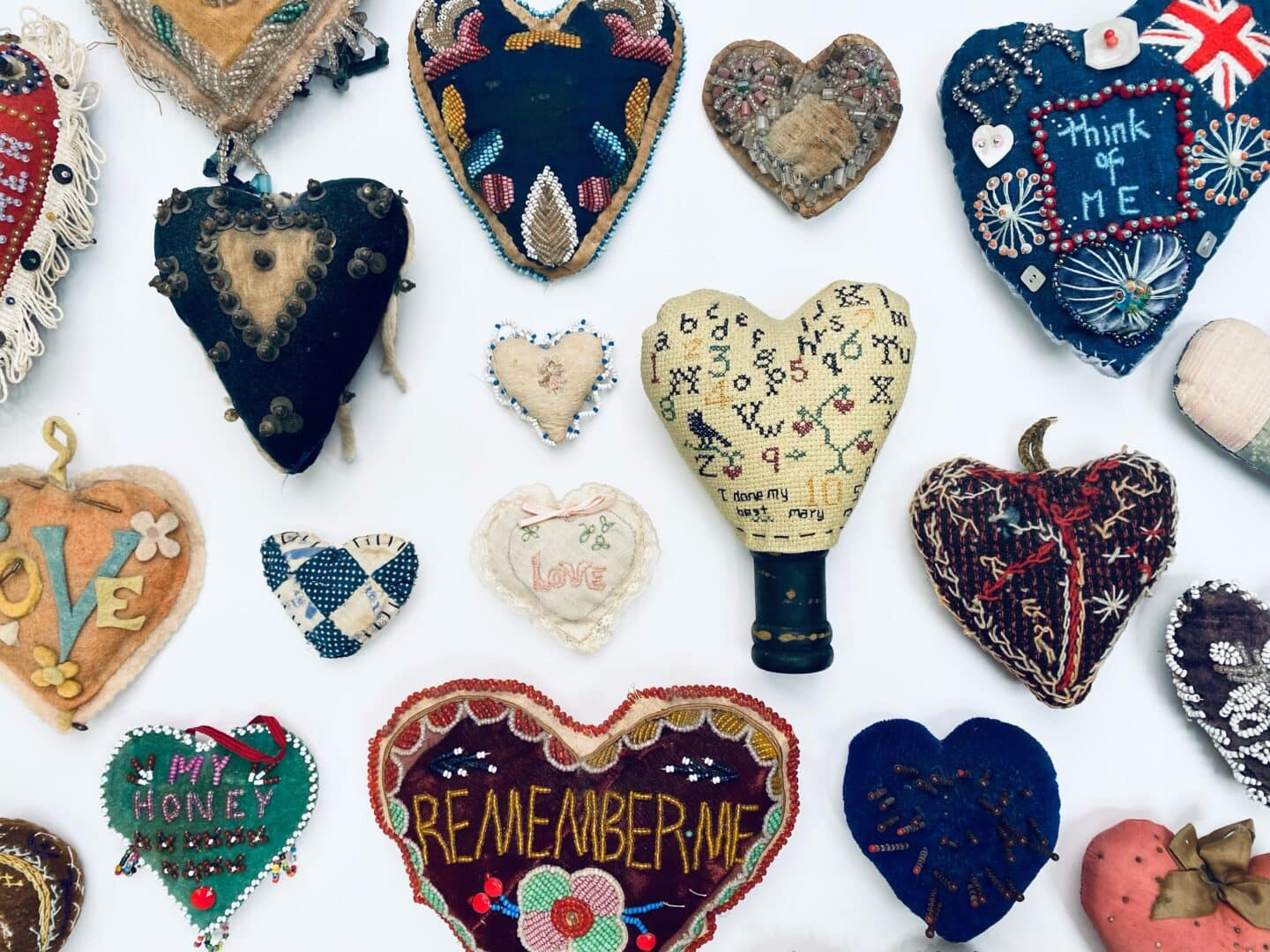
“But a cushion all made by the fingers of a loving friend – a heart-shaped pillow perhaps, and stuck with a message wished in word or symbol and done in brand-new shiny pins – would touch me too.”
Gertrude Whiting, Old-Time Tools & Toys of Needlework, page 157.
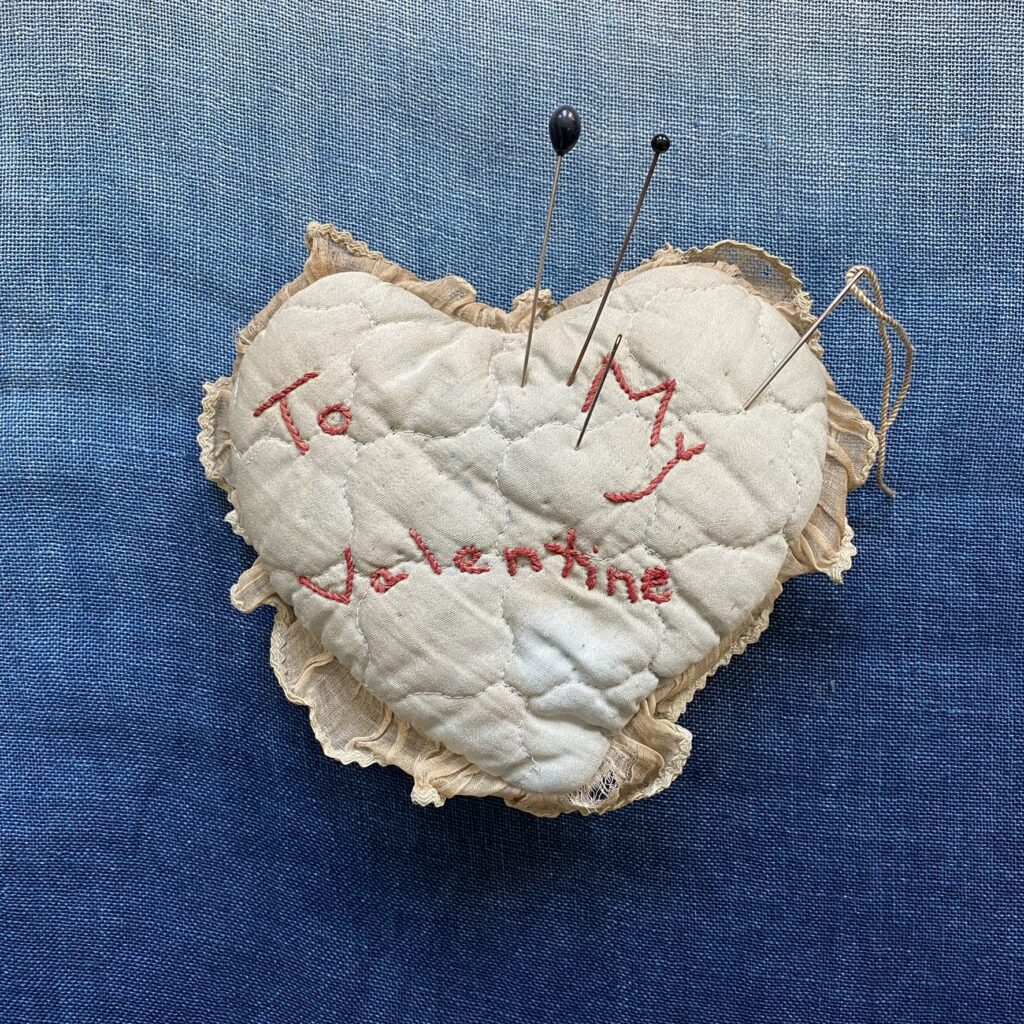
Is there any better way to express love on Valentine’s day than through a carefully handmade and lovingly crafted heart-shaped pincushion?
Heart pincushions, decorated with elaborate patterns, beads, embroidery, and other ornate handiwork, exist historically in several unique categories. Whether used by sailors during wartime as a token for a lover left behind, or crafted by Indigenous peoples to sell using newly acquired materials brought to the Americas by colonizers, the elaborate charm of these cushions is timeless. Our penchant for heart-shaped tokens of love and appreciation is almost as timeless – dating as far back as the 13th century – and is exemplified by the fascinating and endearing history of these pincushions. The legacy of these unique items is a that of craftwork, precision, and attention to detail that far exceeds the tiny dimensions of the objects themselves.
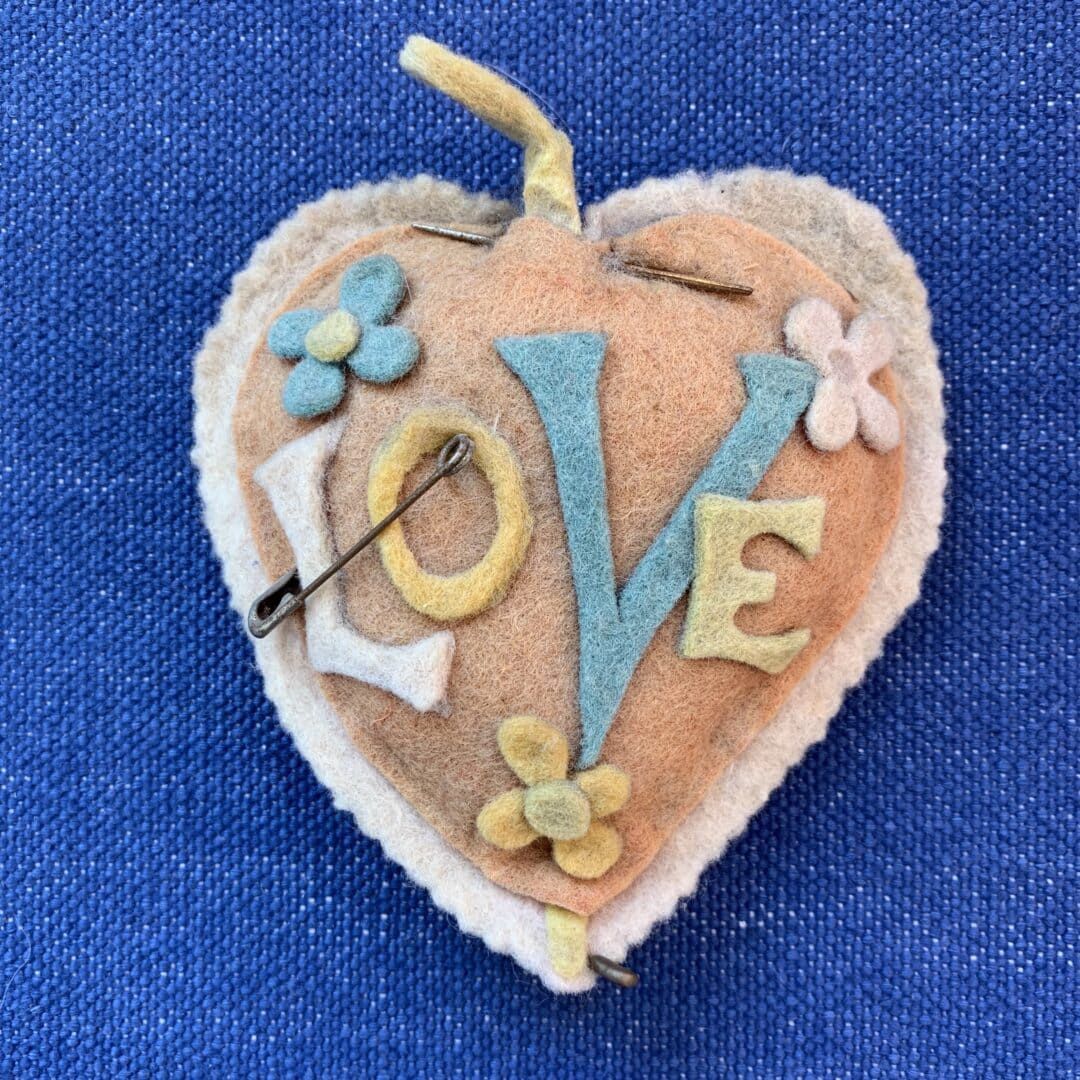
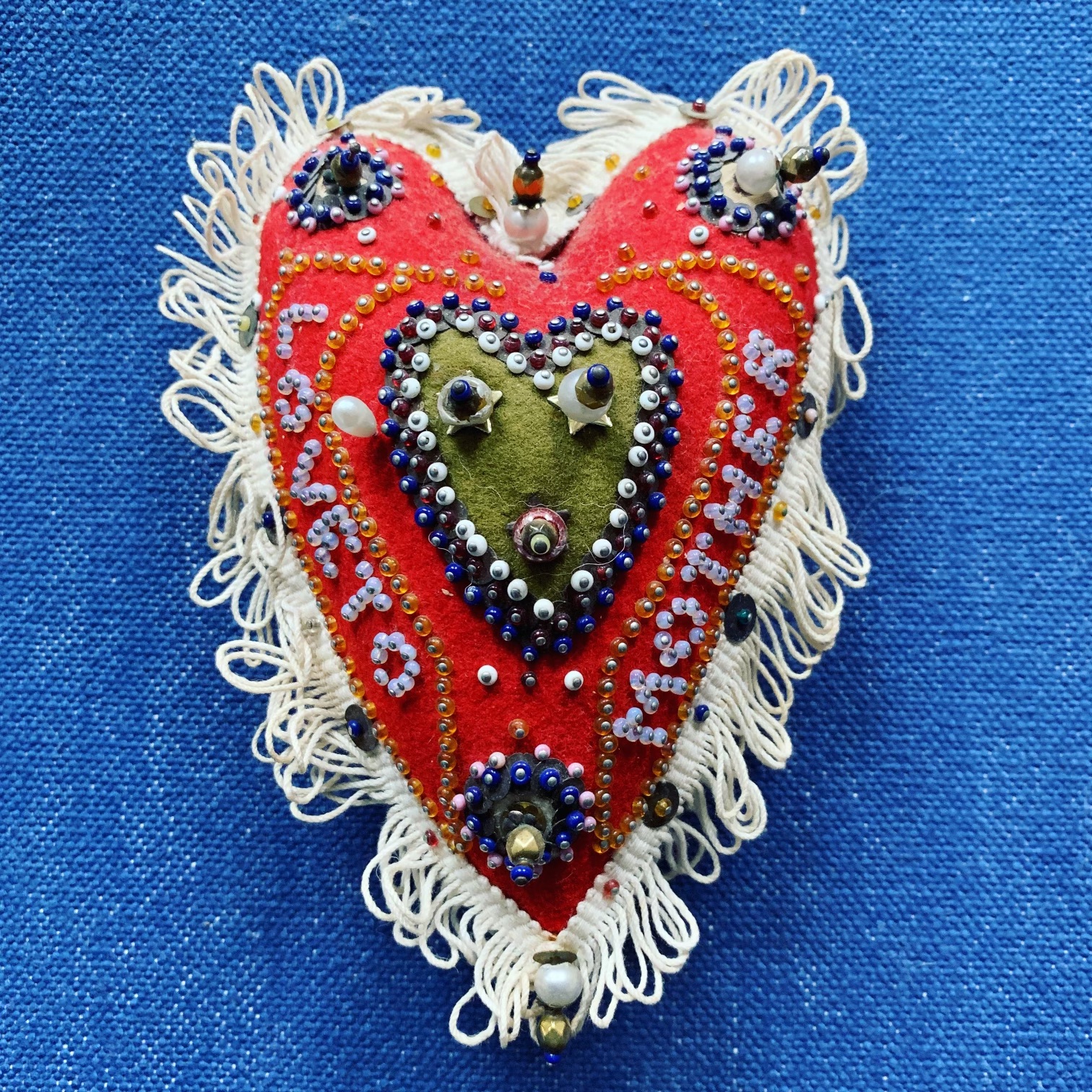
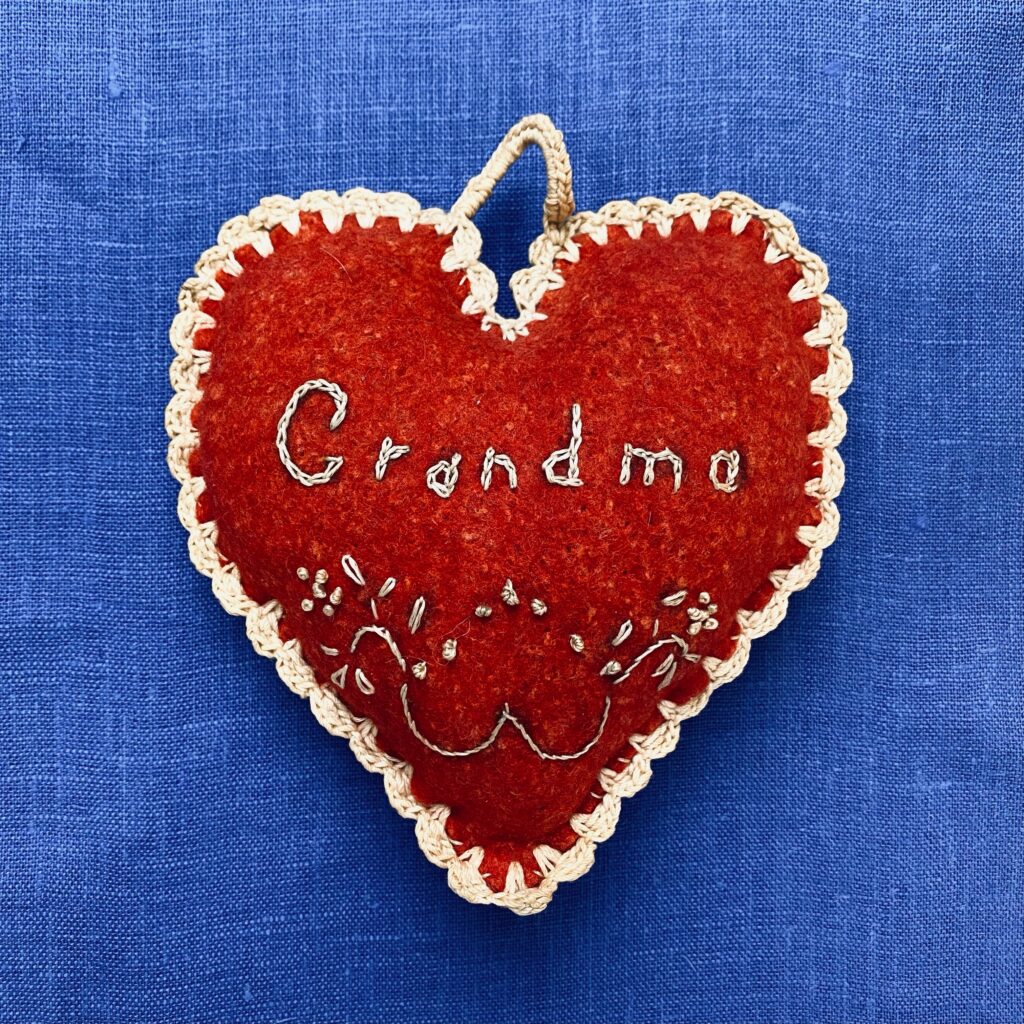
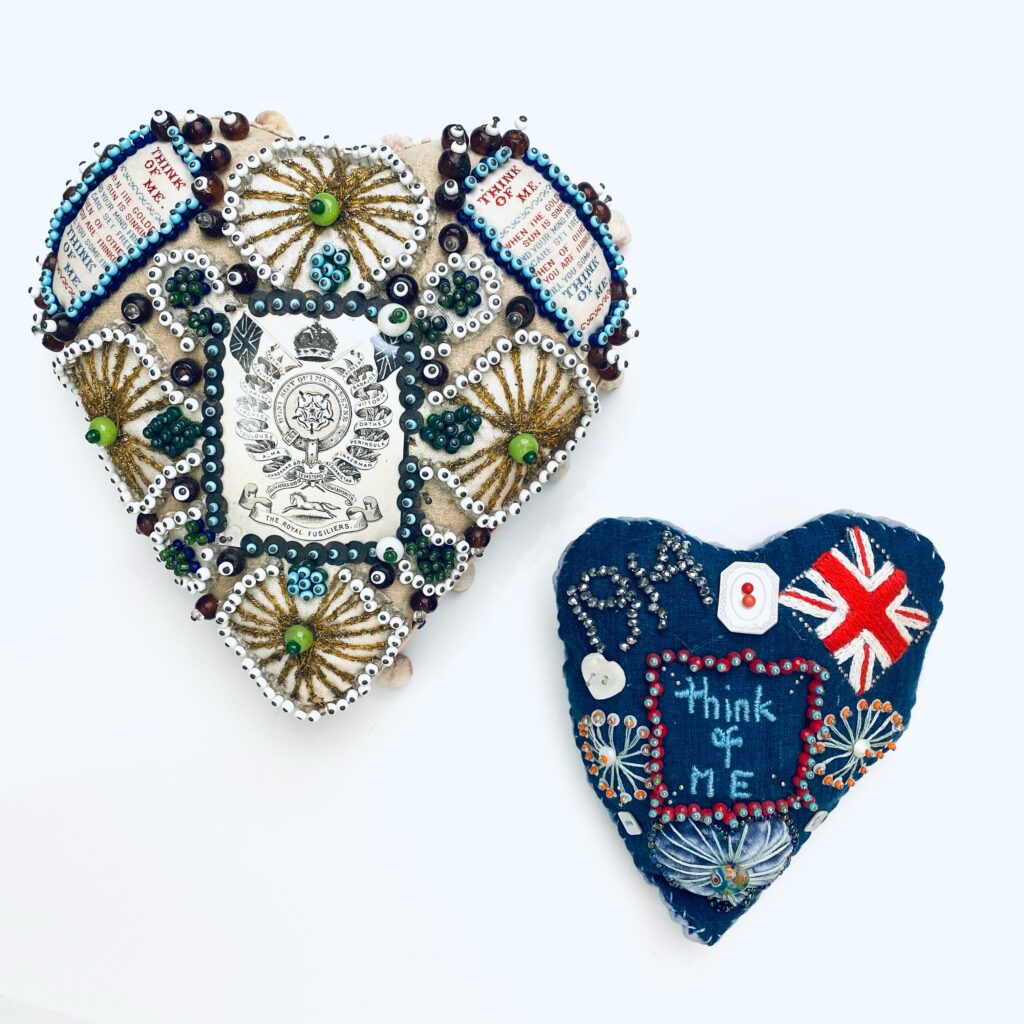
Perhaps the most prominent type of historical pincushion is that of wartime – and, in particular, World War I. Often referred to as “sweethearts” or “sailor’s hearts” these pincushions were heavily decorated with beads, sequins, and inscriptions, and would typically feature the badge, crest, or other insignia of a military regiment or ship. There are several possibilities as to who was making and receiving these special objects. Some sources say that they were made by soldiers while away – a form of textile and craft therapy while in the trenches of war – to send back home to their loved ones. Other sources say that they were made for the soldiers by a loved one so that the heart of home could accompany them while away. Another possibility is that they were made to be commemorative – not to travel at all, but to be displayed in the home, like a photograph or a letter. What is universally accepted by all sources however, is that these pincushions were heart-shaped to represent the love of a soldier who was missed.
Two of the pieces in the Tatter collection are likely British wartime pincushions. The larger of the two is fully adorned with beads and glass-headed pins and features a central coat of arms for “The Royal Fusiliers.” It also has a poem titled “Think of Me” appliquéd on either side of the insignia. The smaller of the two features glass-headed pins arranged in various designs, an embroidered Union Jack, and the phrase “Think of ME” embroidered centrally.
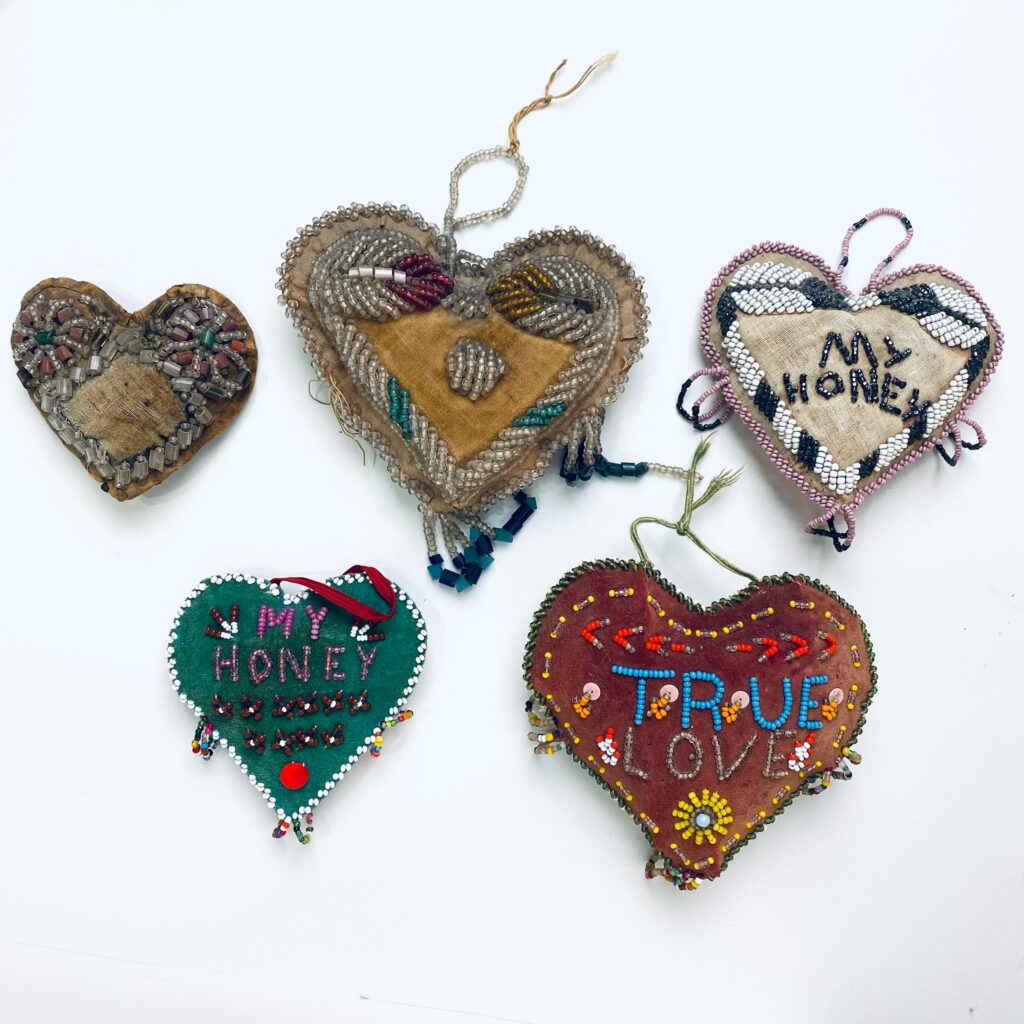
Another prominent type of historical heart pincushions are those made by the Haudenosaunee, or Iroquois – the Indigenous peoples of the Niagara region of the United States and Canada. These pincushions became popular in the mid-19th century and were a result of colonialism and rapid growth of the tourist trade – they were objects likely intended to be souvenirs and sold at outposts in popular tourist destinations. Haudenosaunee heart pincushions were heavily beaded with the most popular colorway being that of a red heart adorned with white glass beads. They would typically also feature beaded floral motifs, sequins, or beaded fringe.
Tatter has its own wonderful collection of heart pincushions. It is amazing to sit and hold them and think about the amazing relationships that must have flourished to bring these tiny, yet powerful objects into existence. From the ornately decorated and embellished soldiers’ hearts, to the carefully beaded and embroidered messages such as “my honey” and “love,” to the more simplistic felted or quilted hearts, each of these unique objects represents a relationship of love.
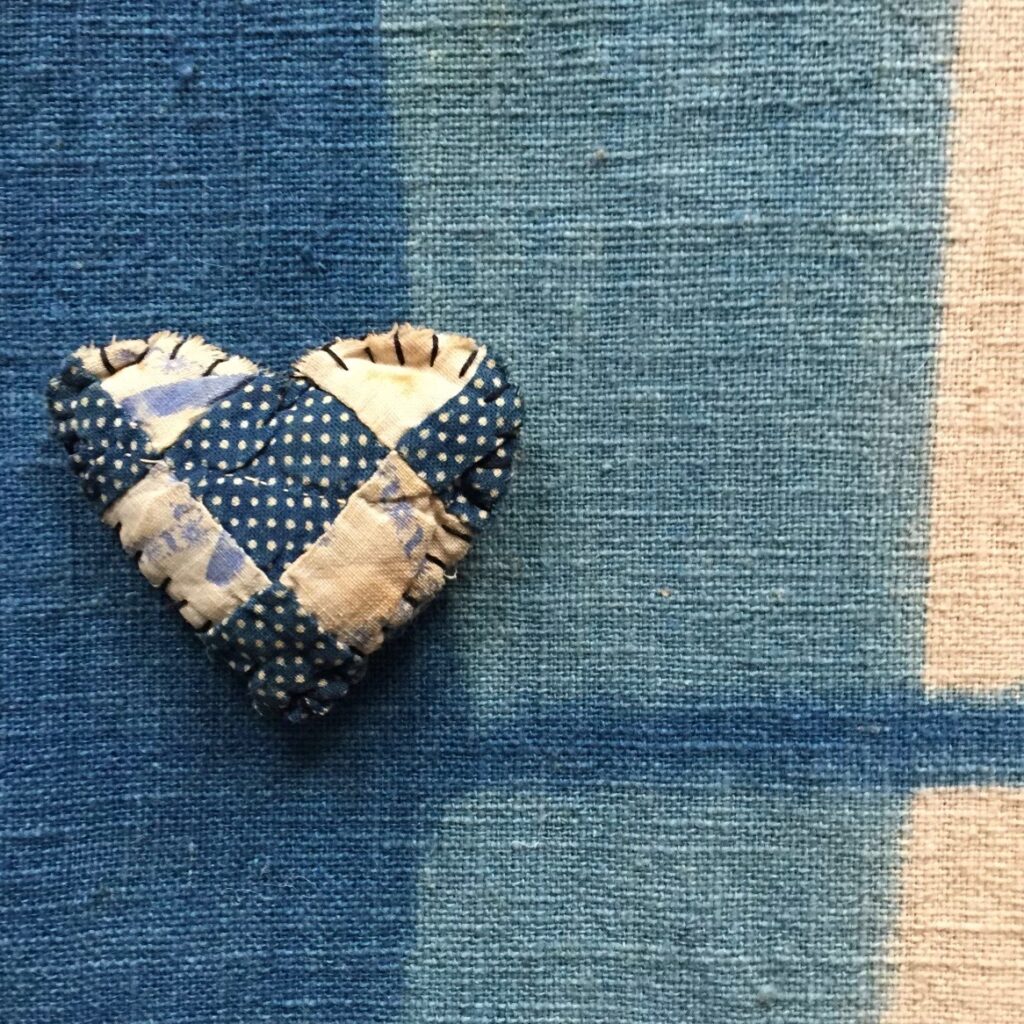
While considering which historical pin cushion to pull inspiration from for our heart pin cushion kit, I was most drawn to the simpler designs – perhaps, in part, as we are not in active war time. This small blue quilted heart in Tatter’s collection stuck out to me the most. It may be unassuming and plain at first, especially when compared to the elaborate designs of the rest of the collection, but I think that there’s so much love to be extracted from this tiny object. How lovingly the tiny pieces were carefully and delicately stitched together to create the pieced background, cut out into the most picturesque heart, shaped and stuffed with love. How wonderful would it be to receive – or make – such a lovely handcrafted token.
The Tatter kit includes all of the instructions and materials needed to create your own heart pincushion for Valentine’s Day (and beyond!) Each kit includes a vintage “wishing button” that is meant to be placed inside the pincushion as an added representation of love. This project is relatively quick and can be customized in endless ways to represent you and your loved one.
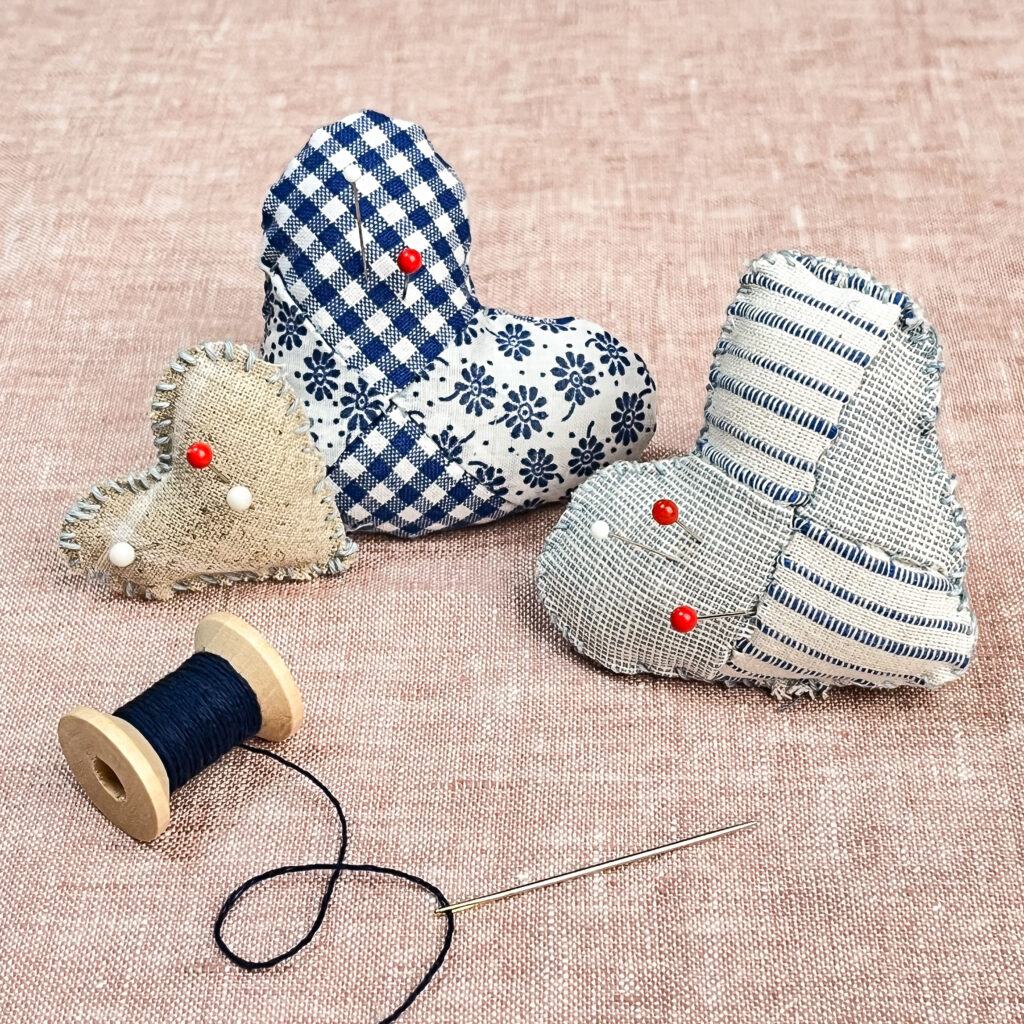
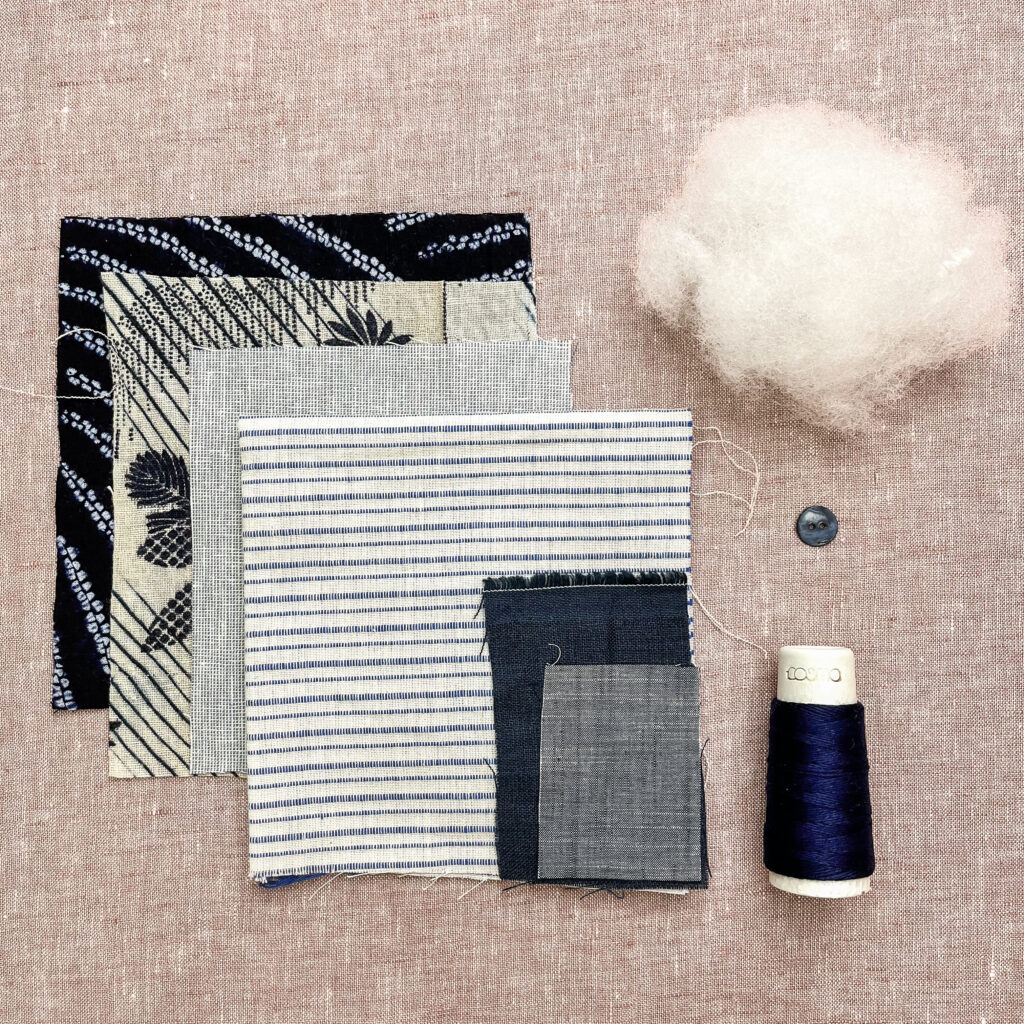
Bibliography:
Johnson, Eleanor. Needlework and Embroidery Tools. Shire, 2001.
Call # TT845.J63
Marie-Louise Avery and Juliet Bawden. The Cushion Book. Abbeville Press, 1995.
Call # TT410.B39
Ronningen, Dawn Cook. Antique American Needlework Tools. Schiffer Publishing, 2018.
Call # TT845.R66
Sudo, Kumiko. Thimbles & Things: Handmade Treasures for All Who Love to Sew. Breckling Press, 2015.
Call # TT715.S83
Whiting, Gertrude. Old-Time Tools & Toys of Needlework. Dover Press, 1971.
Call # TT845.W48

